Education for Sustainable Development: A Study in Adolescent Perception Changes Towards Sustainability Following a Strategic Planning-Based Intervention—The Young Persons’ Plan for the Planet Program
Abstract
1. Introduction
1.1. Addressing the Challenge of Community Engagement in Delivering the United Nations Sustainable Development Goals (SDGs) and Sustainable Outcomes
1.2. Adolescent Engagement for a Sustainable Future Earth
1.3. Education for Sustainable Development
1.3.1. A Systems Approach to the Sustainable Development Goals
1.3.2. STEM (Science, Technology, Engineering, and Mathematics) Skills
1.3.3. Strategic Planning
1.3.4. Challenge-Based and Action Learning
1.3.5. Achieving a ‘Sustainable Mindset’
1.4. Developing the Young Persons’ Plan for the Planet Program
1.5. Research Questions
- (i)
- What is the impact of a strategic planning-based intervention (YPPP Program) on awareness, understanding, motivation, and action orientation towards the SDGs and sustainable outcomes, in an adolescent subset of the Australian and Mauritian population?
- (ii)
- What is the impact of a strategic planning-based intervention (YPPP Program) and alternative motivational framing of the global context on plans for achieving sustainable outcomes and the SDGs in an adolescent subset of the Australian population?
- (iii)
- What is the impact of a strategic planning-based intervention (YPPP Program) on the preferred scenarios for Australia in 2050 for a subset of Australian adolescents, and how do these results compare to the preferred scenarios of the national Australian population?
- (iv)
- What is the impact of a strategic planning-based intervention (YPPP Program) on the attitudes to climate change of Australian adolescents, and how does this compare to a subset of scientists and the attitudes of the national Australian population?
2. Research and Methodology
2.1. Target Segments
2.1.1. Selection of Australia and Mauritius for the Study
2.1.2. Selection of Schools as the Location of the Intervention
2.2. Timeframes
2.3. Funding and Sponsorship
2.4. Quantitative Research Design
2.5. Qualitative Research Design
2.5.1. Focus Groups
2.5.2. United Nations (Information Centre, Canberra) and Media Interviews
3. Results
3.1. Quantitative Research Outcomes
3.1.1. Program Evaluation Surveys
2017. Program Evaluation Survey (Online)
- Gave me a better understanding of what needs to be achieved in the world to create a better world.
- It gave us a voice and as though we have achieved something bigger than us. It also gave us good connections for future.
- Plan for the Planet has raised my awareness for the need to take care for the environment.
- The empowerment that the program gave us. To be more than teenagers and students—and instead to make a difference in the world.
- The full survey is included in Supplementary Information.
2018. Program Evaluation Survey
3.1.2. UN SDGs/Sustainable Future Earth Survey
3.1.3. Future Scenarios Survey
3.1.4. Climate Change Survey
3.1.5. TOBN (Threats, Opportunities, Both, Neither) Survey (Impact of Alternative Motivational Framing of the Global Context on Plans for Achieving Sustainable)
3.2. Qualitative Research
3.2.1. Focus Groups
3.2.2. Media Interviews
3.2.3. UNIC (Australia) Interviews and Australia Conference (Canberra, 2017) and Mauritius (Port Louis, 2018) International Conference Presentations
4. Discussion
4.1. Impact of the Intervention on Awareness, Understanding, Motivation, and Action Orientation towards Sustainable Outcomes
4.2. Methodology
5. Conclusions
Supplementary Materials
Author Contributions
Funding
Acknowledgments
Conflicts of Interest
References
- UN. The Sustainable Development Goals Report 2016. U.N.V.U. Nations, 2016. Available online: https://doi.org/10.18356/3405d09f-en (accessed on 31 July 2019).
- Fukuda-Parr, S.; Greenstien, J.; Stewart, D. How should MDG success and failure be judged: Faster Progress or Achieving the Targets. World Dev. 2013, 41, 19–30. [Google Scholar] [CrossRef]
- Figueiro, P.; Raufflet, E. Sustainability in Higher Education: A systematic review wirth focus on management education. J. Clean. Prod. 2015, 106, 22–33. [Google Scholar] [CrossRef]
- Ki-moon, B. Sustainability—Engaging future generations now. Lancet 2016, 387, 2356–2358. [Google Scholar] [CrossRef]
- Mintzberg, H.; Lampel, J. Reflecting on the strategy process. Sloan Manag. Rev. 1999, 40, 21–22. [Google Scholar]
- Glasser, H.; Hirsh, J. Toward the development of robust learning for sustainability core competencies. Sustain. J. Rec. 2016, 9, 121–134. [Google Scholar] [CrossRef]
- BBC. Students Act on Climate Change. 2019. Available online: https://www.bbc.com/news/uk-47250424 (accessed on 10 April 2019).
- Howard, J.; Wheeler, J. What community development and citizen participation should contribute to the new global framework for sustainable development. Community Dev. J. 2015, 50, 552–570. [Google Scholar] [CrossRef]
- Bastien, S.; Holmarsdottir, H.E. Youth ‘At the Margins’: Critical Perspectives and Expeiences of Engaining Youth in Research Worldwide; Springer: New York, NY, USA, 2015. [Google Scholar]
- UNICEF. A Climate for Change, in 2019 Young Ambassador Report; UNICEF Australia: Sydney, Australia, 2019. [Google Scholar]
- Dejaeghere, J.; Baxter, A. Entreprenearship Education. Prog. Dev. Stud. 2014, 14, 61–76. [Google Scholar] [CrossRef]
- UNESCO, SDGs. 2019. Available online: https://en.unesco.org/sdgs (accessed on 10 May 2019).
- OECD. Global competency for an inclusive world. In Programme for International Student Assessment; OECD: Paris, France, 2018. [Google Scholar]
- AS. What Is Global Competence? Asia Society. 2019. Available online: https://asiasociety.org/education/what-global-competence?gclid=Cj0KCQjwn8_mBRCLARIsAKxi0GKE0FK_Mb5eKV2vBg-vyKFPzK8DSZebcHKY8jxnqLB12TkRKO7fY4saArdLEALw_wcB (accessed on 10 May 2019).
- Costanza, R. A theory of socio-ecological system change. J. Bioecon. 2014, 16, 39–44. [Google Scholar] [CrossRef]
- The, S.Y.; Koh, H.L. Education for Sustainable Development: The STEM Approach in Universiti Sains Malaysia. In Universities as Living Labs for Sustainable Development; Leal Filho, W., Ed.; Springer: Cham, Switzerland, 2020. [Google Scholar]
- Allen, C.; Metternicht, G.; Wiedmann, T. National pathways to the Sustainable Development Goals (SDGs): A comparative review of scenario modelling tools. Environ. Sci. Policy 2016, 66, 199–207. [Google Scholar] [CrossRef]
- Wals, A.E.J.; Mochizuki, Y.; Leicht, A. Critical case-studies of non-formal and community learning for sustainable development. Int. Rev. Educ. 2017, 63, 783–792. [Google Scholar] [CrossRef]
- Kessel, K.; Rimanoczy, I.; Mitchell, S. The sustainable mindset: Connecting being, thinking, and doing in management education. In Academy of Management Proceedings; Academy of Management: Briarcliff Manor, NY, USA, 2016; p. 16659. [Google Scholar]
- GCGH. Grand Challenges. Bill and Melinda Gates Foundation, 2019. Available online: https://gcgh.grandchallenges.org/grant-opportunities (accessed on 10 May 2019).
- Walid, M.; Luetz, J.M. From education for sustainable development to education for environmental sustainability: Reconnecting the disconnected SDGs. In Handbook of Sustainability Science and Research; Springer: Berlin/Heidelberg, Germany, 2018; pp. 803–826. [Google Scholar]
- Deloitte. Preparing Tomorrows Workforce for 4IR. 2019. Available online: https://www2.deloitte.com/content/dam/Deloitte/global/Documents/About-Deloitte/gx-preparing-tomorrow-workforce-for-4IR.pdf (accessed on 10 May 2019).
- Ministry of Education and Human Resources. Inspiring Every Child; Ministry of Education and Human Resources: Phoenix, Republic of Mauritius, 2016. Available online: http://ministry-education.govmu.org/English/educationsector/nys/Documents/NYCBE%20Booklet.pdf (accessed on 15 August 2019).
- DoE (WA), E.D.o.W.A.; CoRE. CoRE Learning Foundation Website. 2019. Available online: https://www.corefoundation.com.au (accessed on 31 July 2019).
- CTB. Strategic Planning/VMOSA. 2019. Available online: https://ctb.ku.edu/en/table-of-contents/structure/strategic-planning/vmosa/main (accessed on 10 May 2019).
- Chambers, I.; Humble, J. Plan for the Planet: A Business Plan for a Sustainable World; Routledge: London, UK, 2017. [Google Scholar]
- Kaufman, J. The Personal MBA; Penguin: New York, NY, USA, 2012. [Google Scholar]
- Fuertes-Camacho, T.; Graell-Martín, M.; Fuentes-Loss, M.; Balaguer-Fàbregas, M.C. Integrating Sustainability into Higher Education Curricula through Project Method, a Global Learning Strategy. Sustainability 2019, 11, 767. [Google Scholar] [CrossRef]
- Pryshiakivski, J.; Sercy, C. Sustainable Development as a ‘wicked problem’. In Managing and Engineering in Complex Situations; Springer: Dordrecht, The Netherlands, 2012; pp. 109–129. [Google Scholar]
- Meadows, D.H. Leverage Points: Places to intervene in a System. In The Donella Meadows Project; Academy of Systems Change: Burlington, VT, USA, 2019; pp. 1–17. [Google Scholar]
- Costanza, R.; Atkins, P.W.B.; Bolton, M.; Cork, S.; Grigg, N.J.; Kasser, T.; Kubiszewski, I. Overcoming societal addictions: What can we learn from individual therapies? Ecol. Econ. 2017, 131, 543–550. [Google Scholar] [CrossRef]
- Rygh, K.; de Droog, M.; Arets, D. Systemic Design Interventions: Using Systems Thinking and Design Thinking to Intervene in Systems. In Relating Systems Thinking and Design 2013 Symposium Proceedings, Proceedings of the RSD2 2013, Oslo, Norway, 9–11 October 2013; Sevaldson, B., Jones, P., Eds.; The Oslo School of Architecture and Design: Oslo, Norway, 2013. [Google Scholar]
- Biasutti, M.; Frate, S. A validity and reliability study of the Attitudes toward Sustainable Development scale. Environ. Educ. Res. 2017, 23, 214–230. [Google Scholar] [CrossRef]
- Scoullos, M. Education for Sustainable Development in Biospheres and Other Designated Areas; UNESCO: Paris, France, 2013. [Google Scholar]
- The Diplomat. Time for Australia to embrace Urbanisation. 2017. Available online: https://thediplomat.com/2017/01/time-for-australia-to-embrace-urbanization/ (accessed on 10 May 2019).
- Chambers, I.; Costanza, R.; Zingus, L.; Cork, S.; Hernandez, M.; Sofiullah, A.; Htwe, T.Z.; Kenny, D.; Atkins, P.; Kasser, T.; et al. A public opinion survey of four future scenarios for Australia in 2050. Futures 2018, 107, 119–132. [Google Scholar] [CrossRef]
- Milford, T.L.; Duckitt, J. The Envirnonmental Attitudes Inventory: A valid and Reliable Measure to Assess the Sturcure of Envinromenatal Attitudes. J. Environ. Psychol. 2010, 30, 80–94. [Google Scholar]
- Bergman, B.G. Assessing impacts of Locally Designed Envirnomental Education Projectds on Students’ Envirnomental Attitudes, Awareness and Intetion to Act. Environ. Educ. Res. 2015, 22, 480–503. [Google Scholar] [CrossRef]
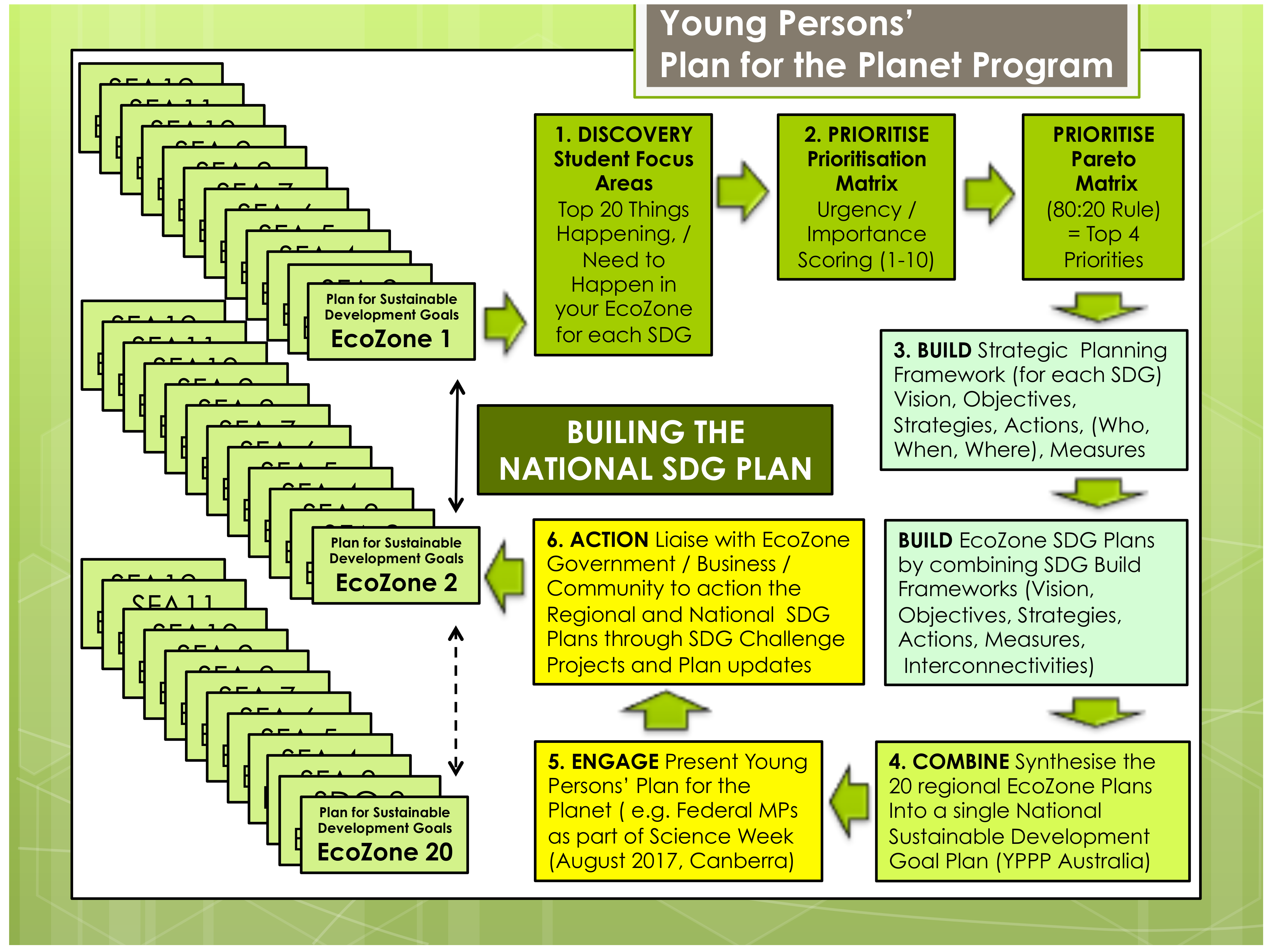
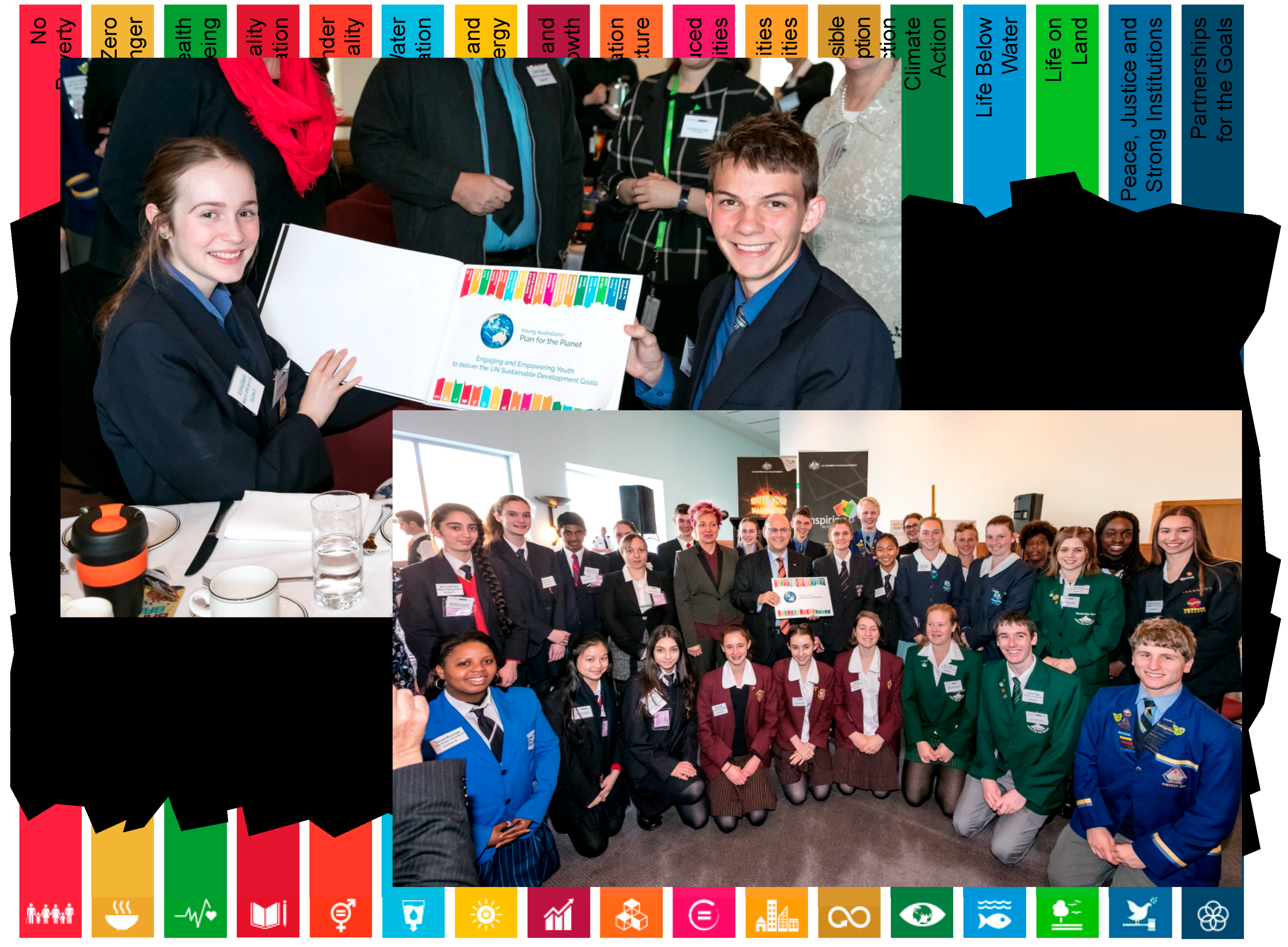
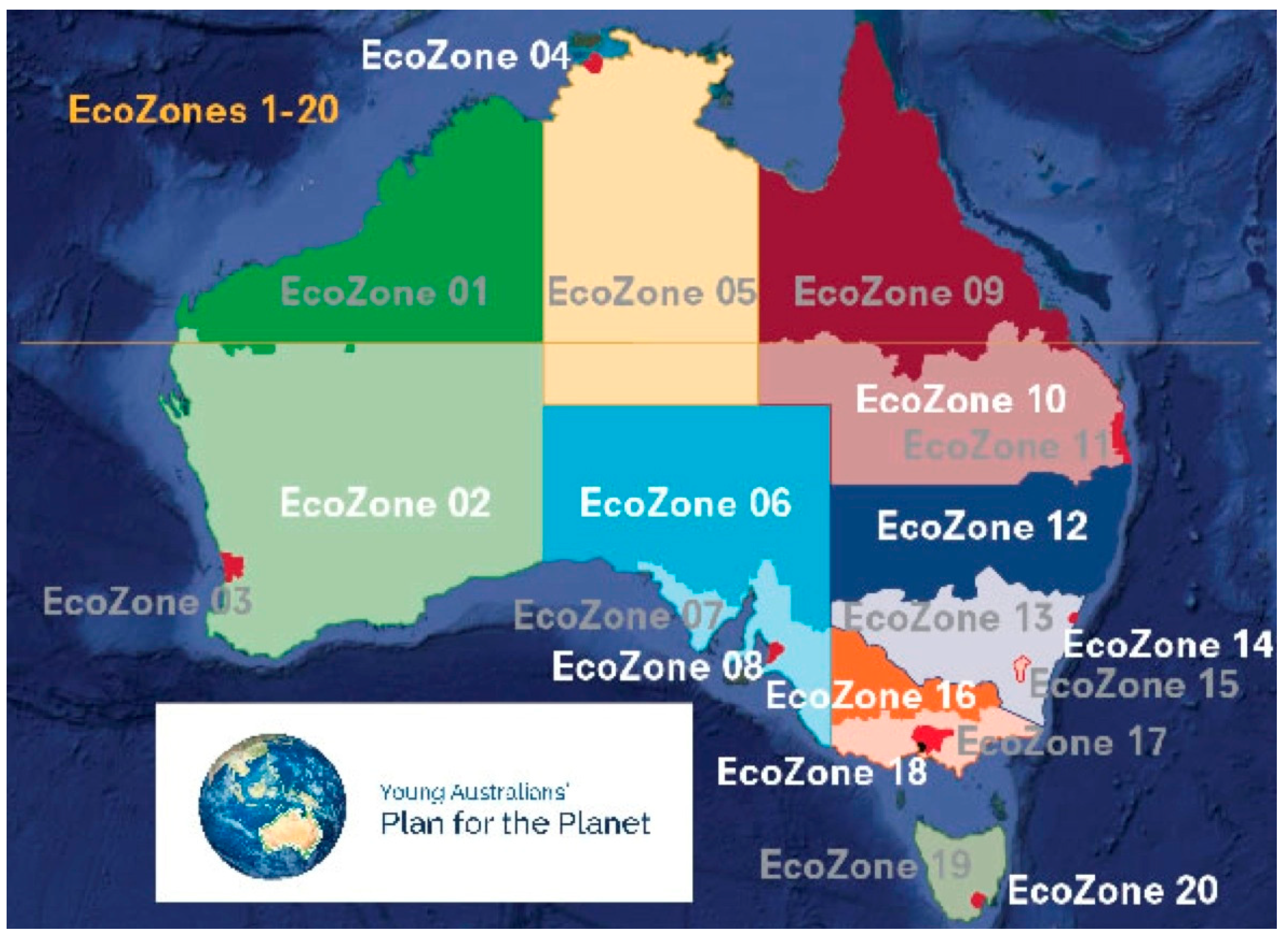
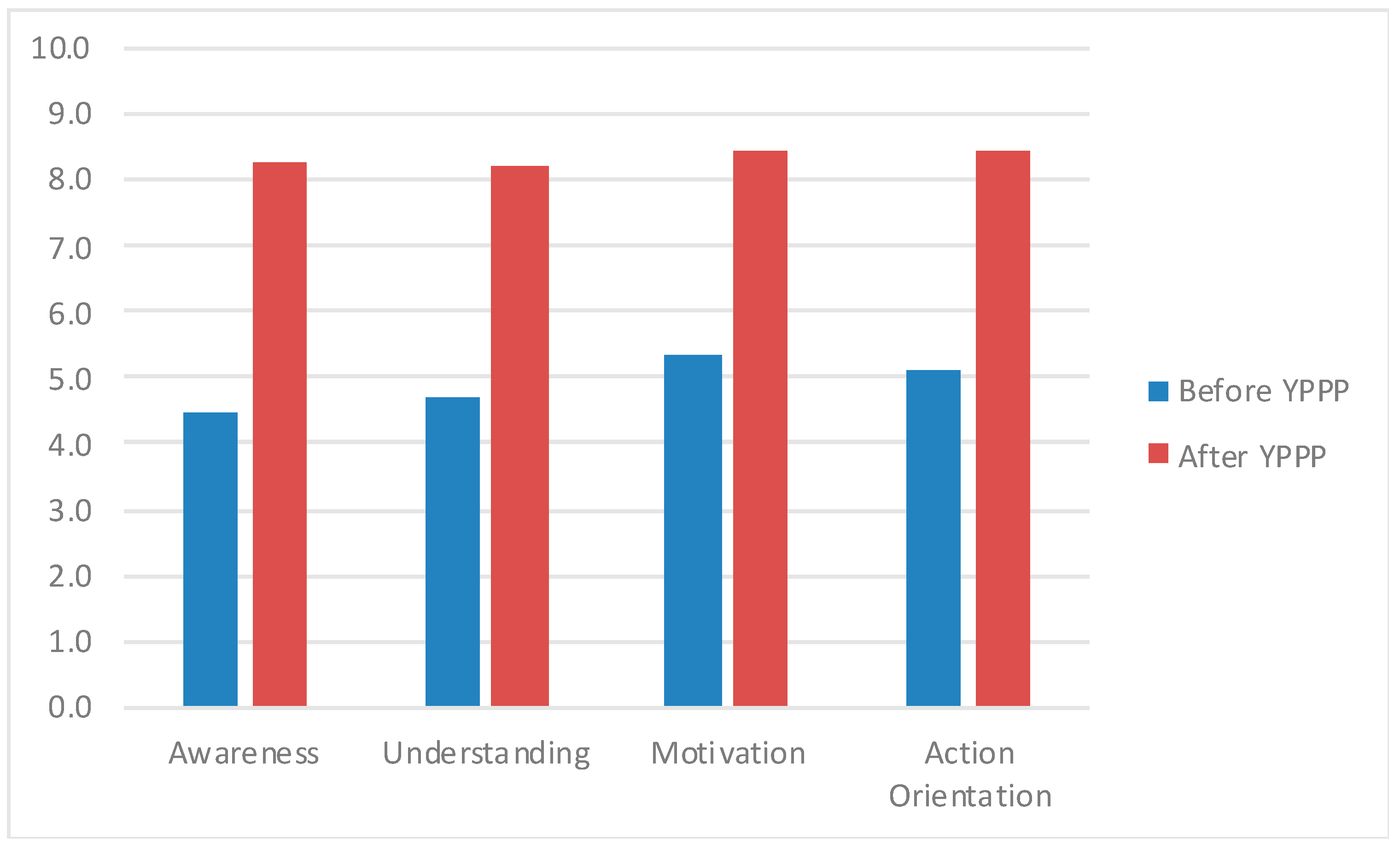
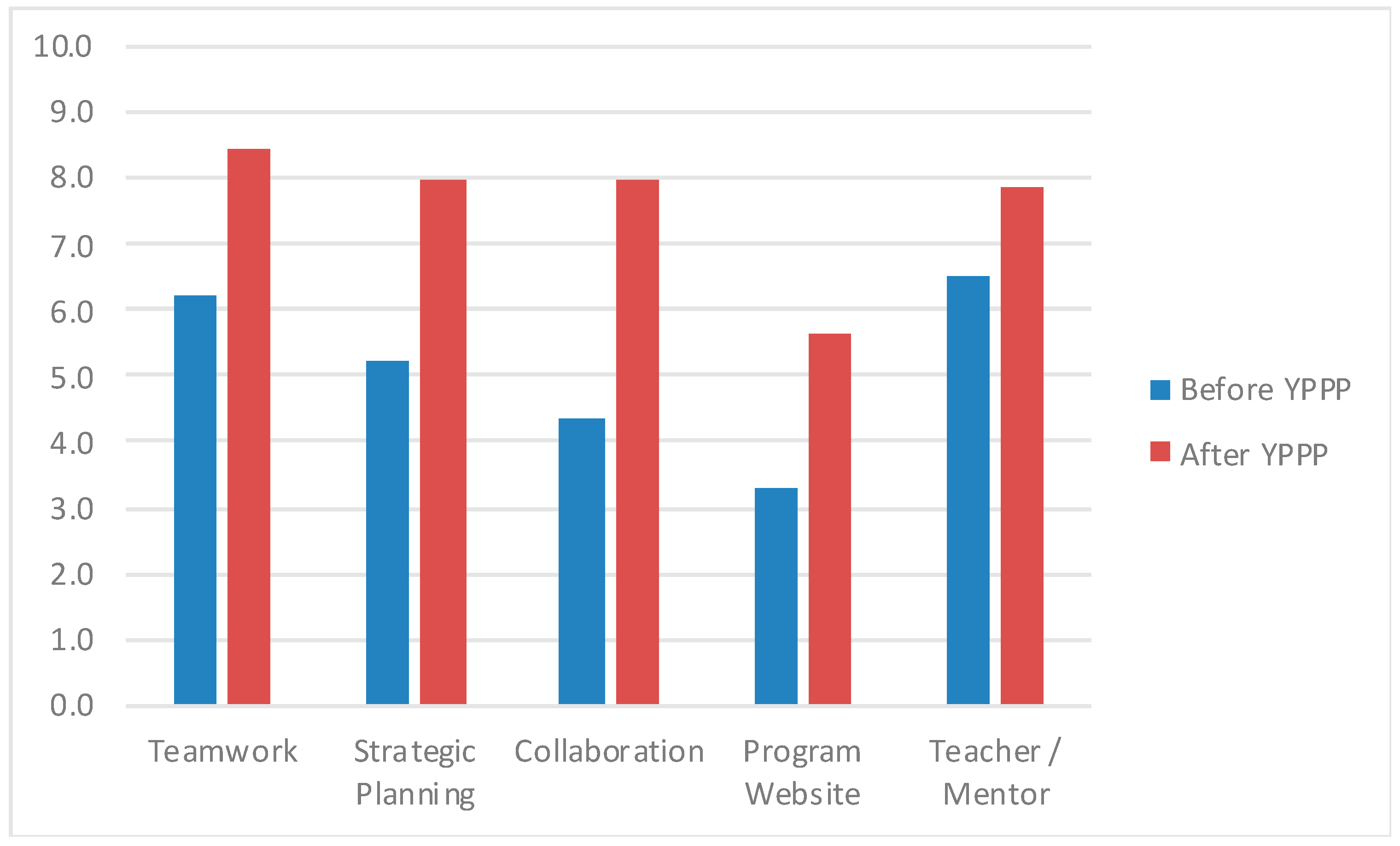
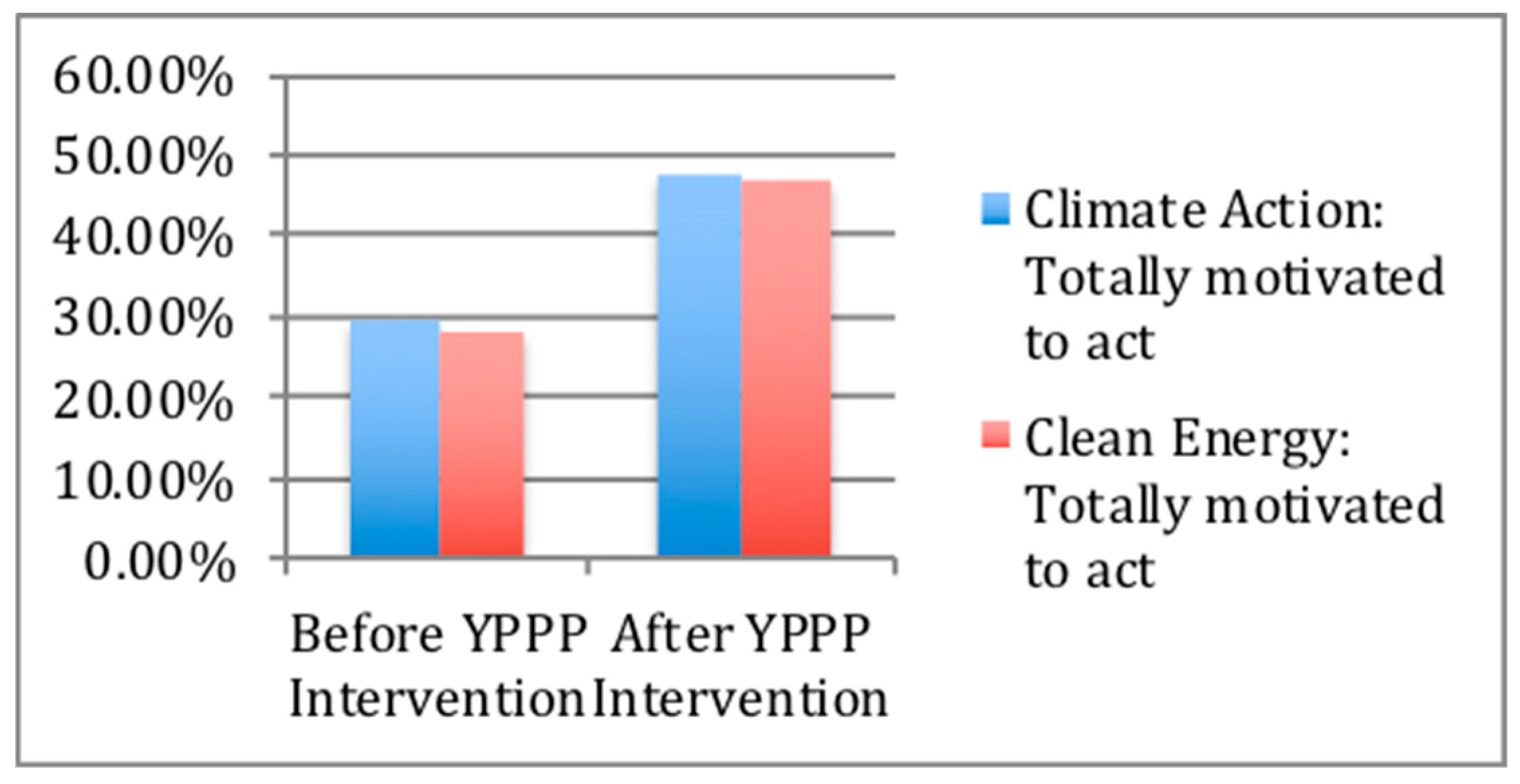
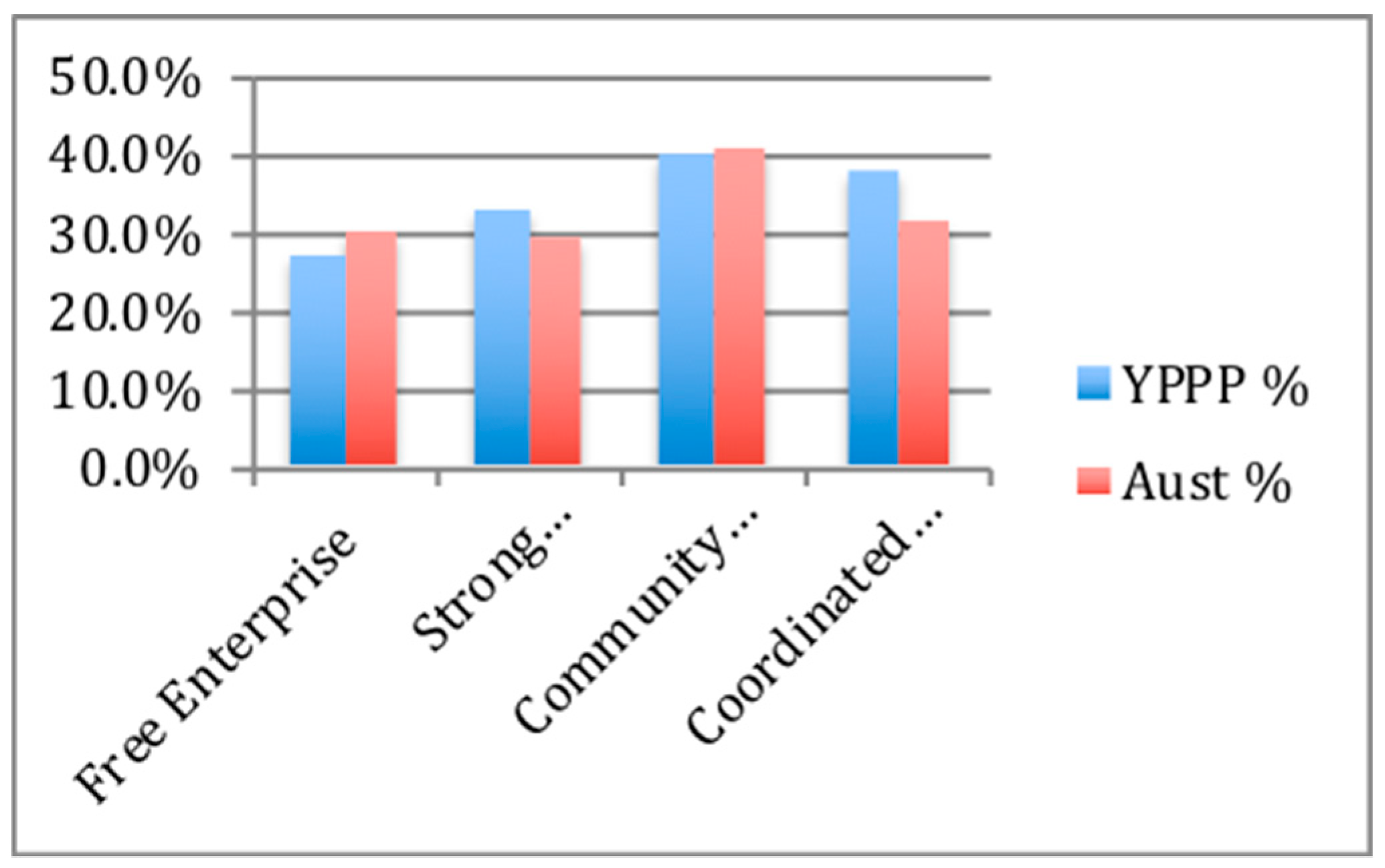
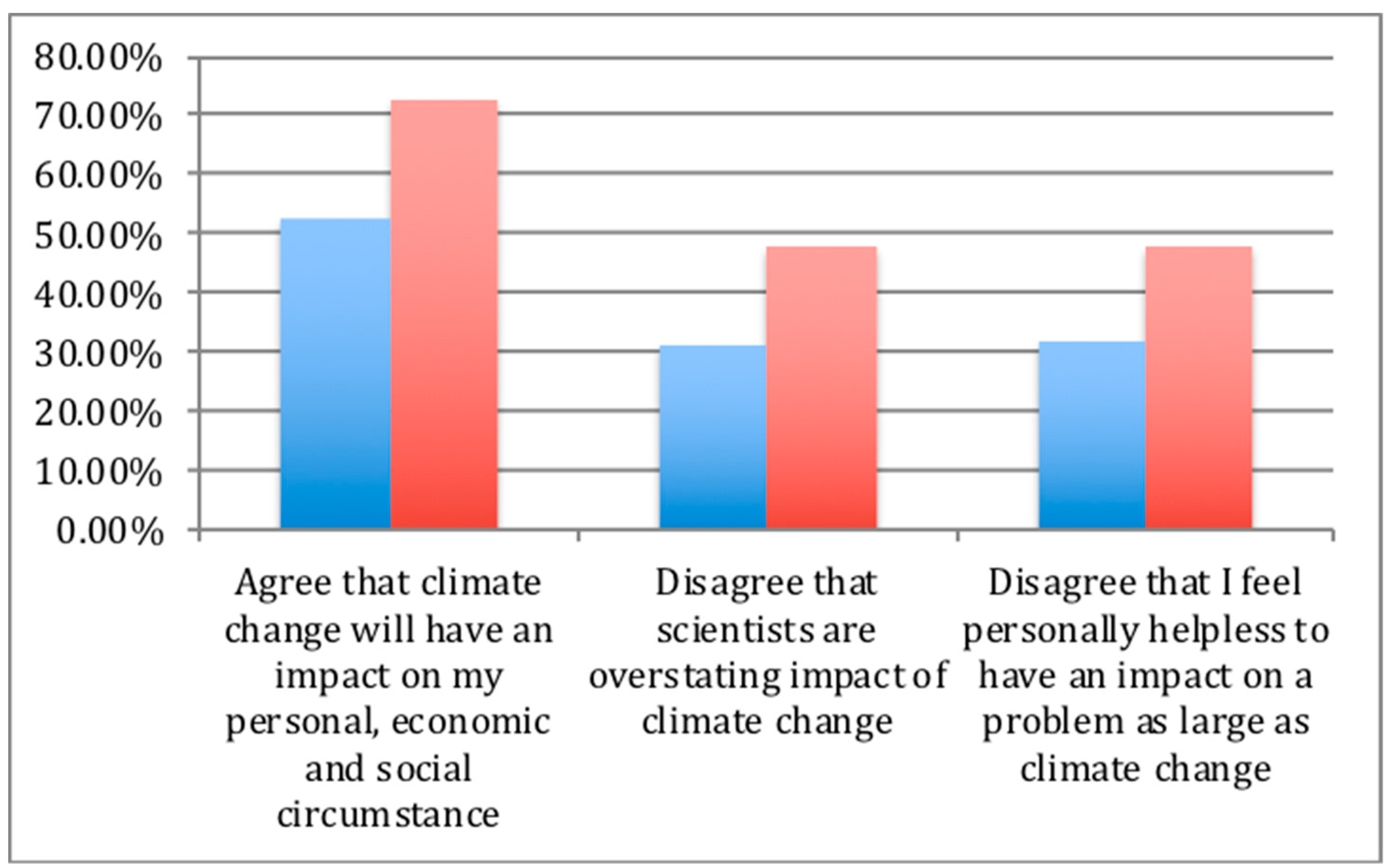

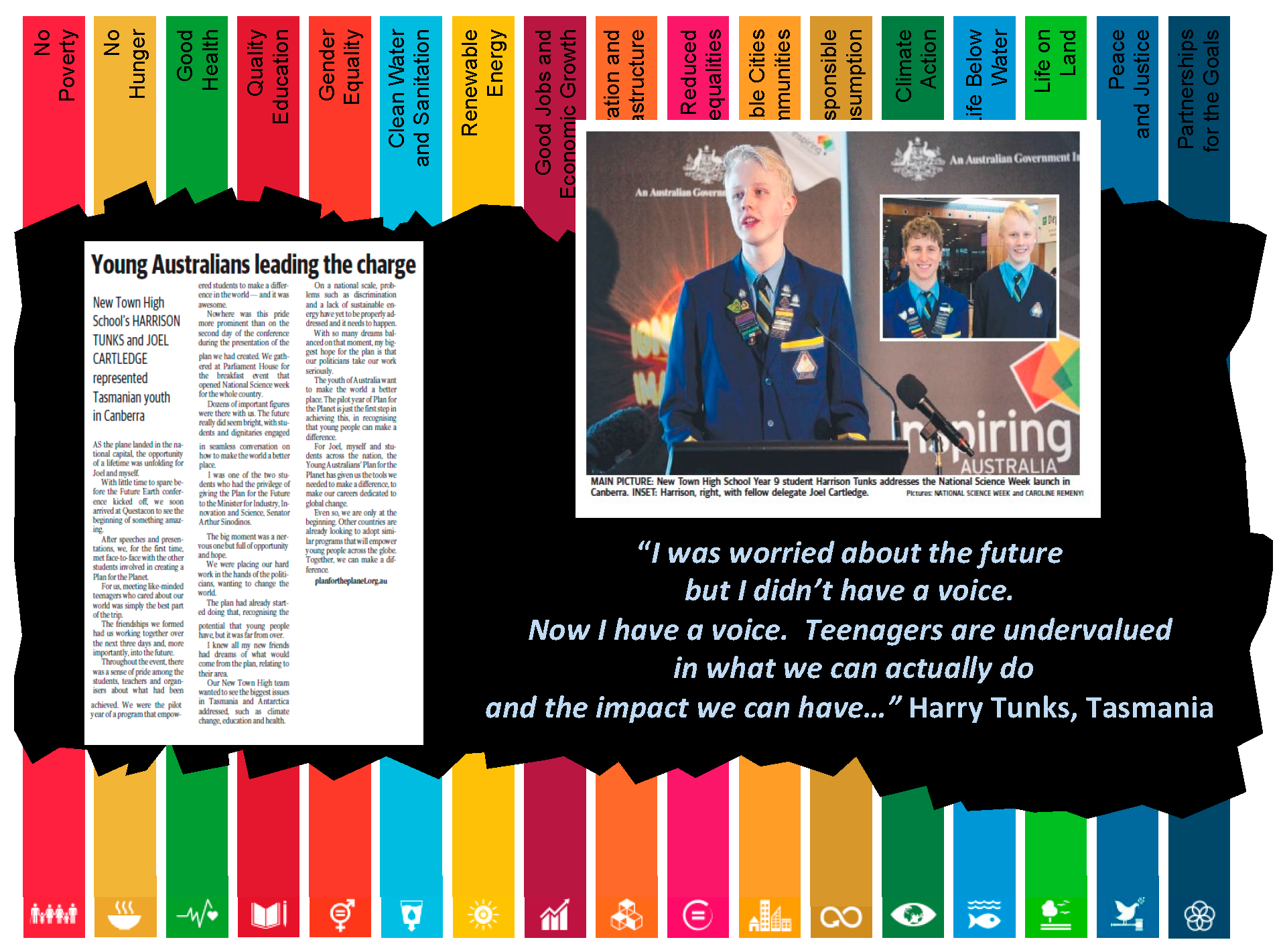
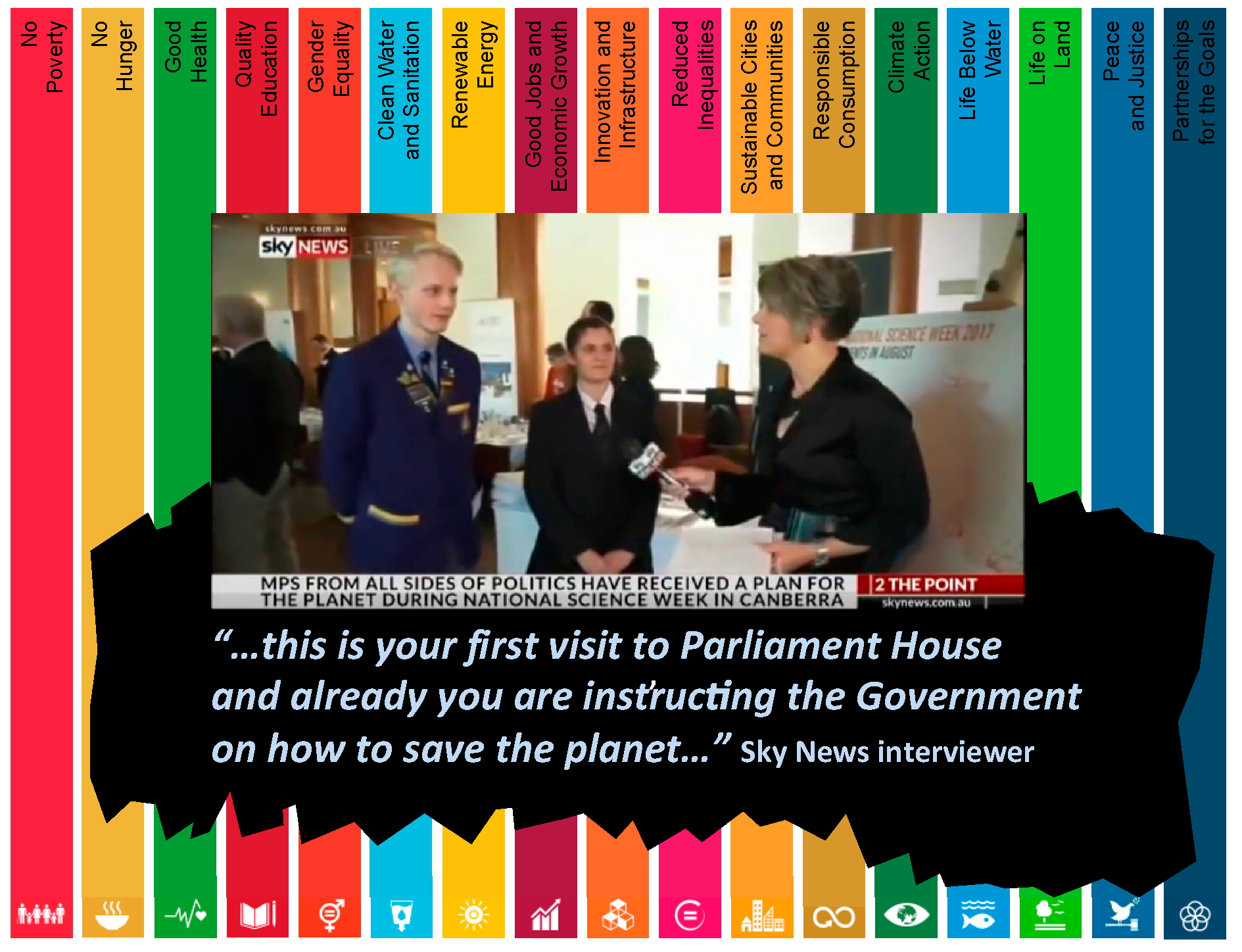
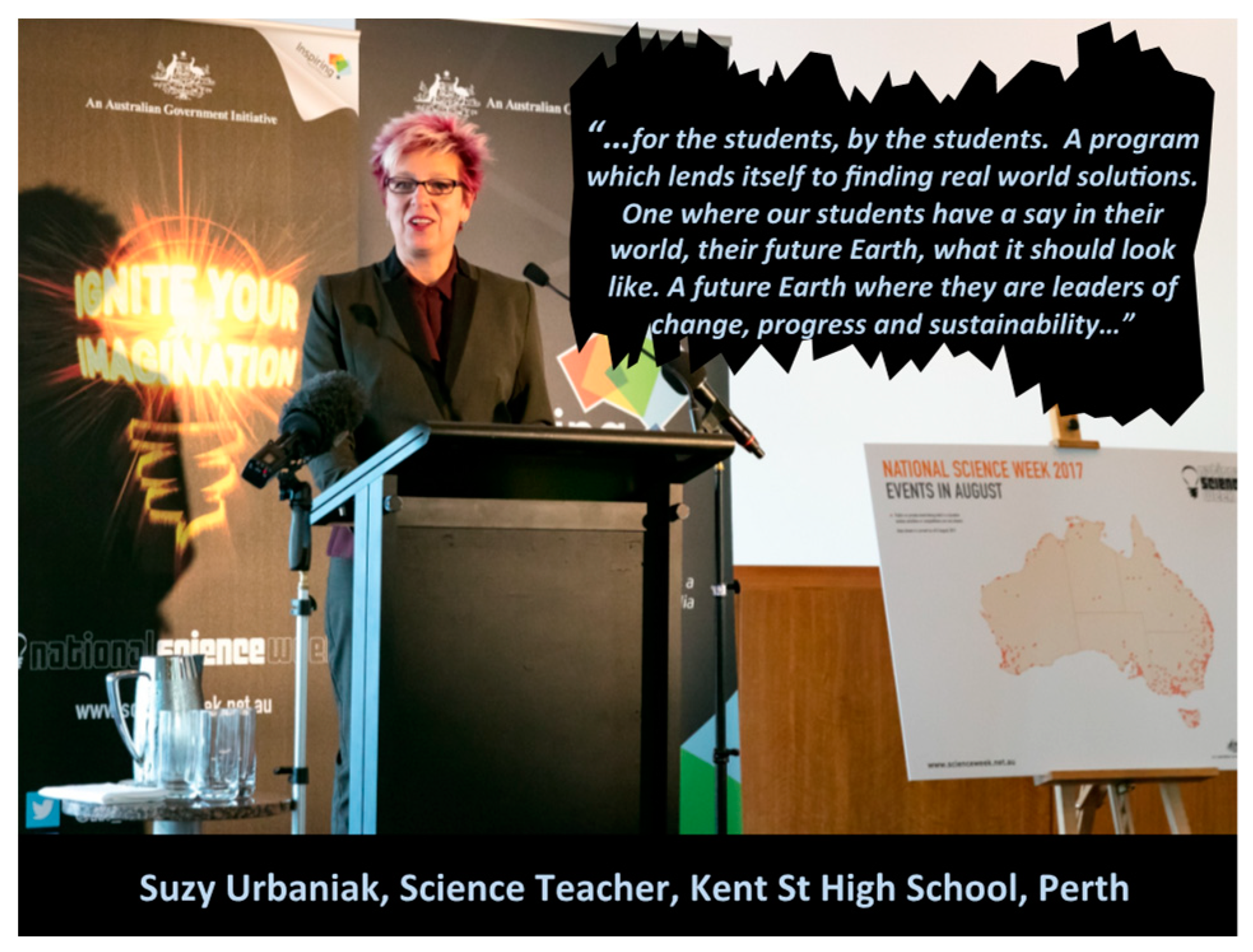
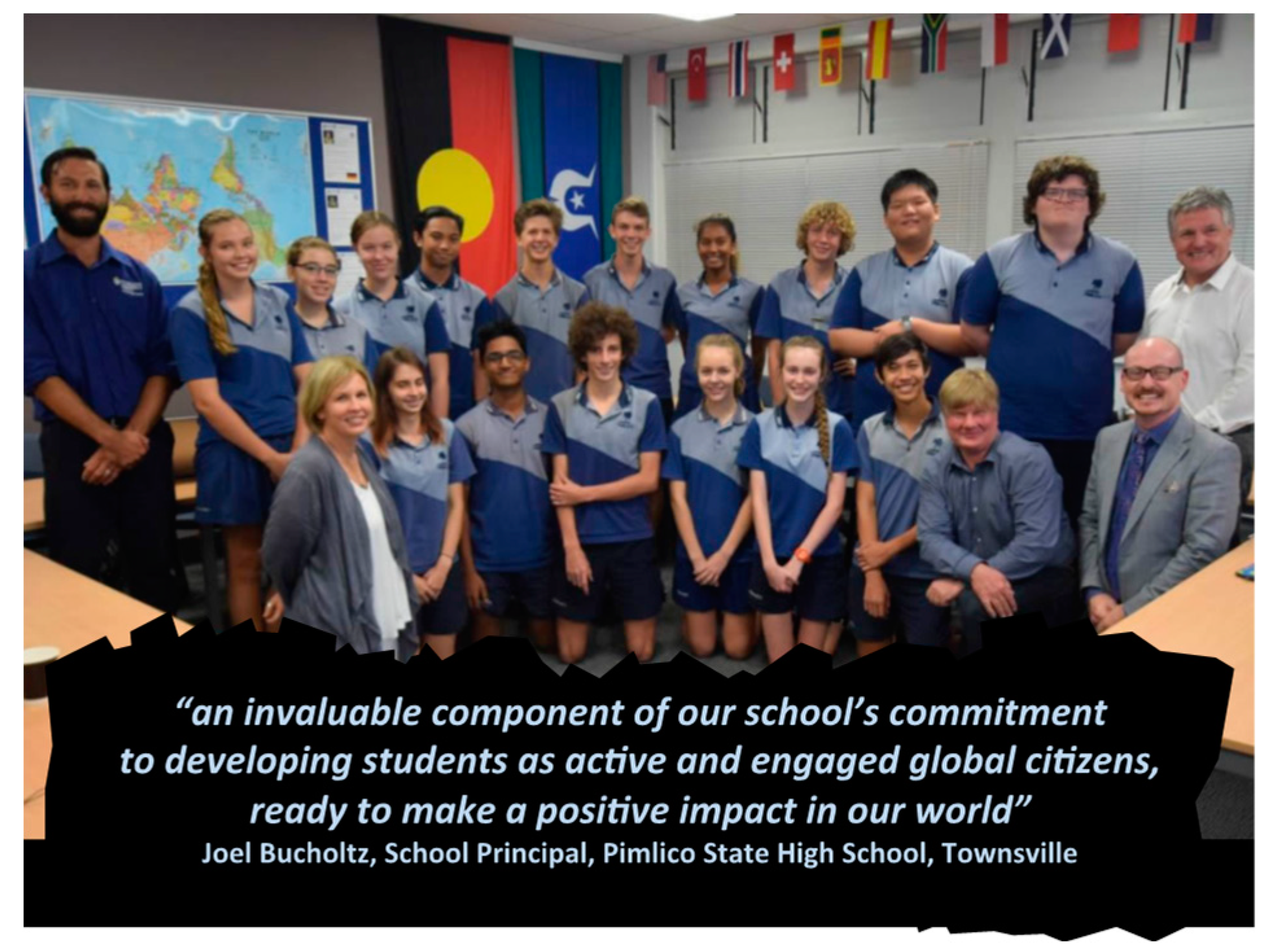
© 2019 by the authors. Licensee MDPI, Basel, Switzerland. This article is an open access article distributed under the terms and conditions of the Creative Commons Attribution (CC BY) license (http://creativecommons.org/licenses/by/4.0/).
Share and Cite
Ian, C.; John, R.; Suzy, U.; David, G.; Graham, D.; Bobby, C.; Aman, M.; Bhamini, K.A.; Rees, B.; Charles, N.; et al. Education for Sustainable Development: A Study in Adolescent Perception Changes Towards Sustainability Following a Strategic Planning-Based Intervention—The Young Persons’ Plan for the Planet Program. Sustainability 2019, 11, 5817. https://doi.org/10.3390/su11205817
Ian C, John R, Suzy U, David G, Graham D, Bobby C, Aman M, Bhamini KA, Rees B, Charles N, et al. Education for Sustainable Development: A Study in Adolescent Perception Changes Towards Sustainability Following a Strategic Planning-Based Intervention—The Young Persons’ Plan for the Planet Program. Sustainability. 2019; 11(20):5817. https://doi.org/10.3390/su11205817
Chicago/Turabian StyleIan, Chambers, Roberts John, Urbaniak Suzy, Gibson David, Durant Graham, Cerini Bobby, Maulloo Aman, Kamudu Applasawmy Bhamini, Barrett Rees, Nelson Charles, and et al. 2019. "Education for Sustainable Development: A Study in Adolescent Perception Changes Towards Sustainability Following a Strategic Planning-Based Intervention—The Young Persons’ Plan for the Planet Program" Sustainability 11, no. 20: 5817. https://doi.org/10.3390/su11205817
APA StyleIan, C., John, R., Suzy, U., David, G., Graham, D., Bobby, C., Aman, M., Bhamini, K. A., Rees, B., Charles, N., Heather, R., Kamaljit, S., Jeremy, R.-S., Kim, F., Joel, B., Mark, S. S., & James, G. I. (2019). Education for Sustainable Development: A Study in Adolescent Perception Changes Towards Sustainability Following a Strategic Planning-Based Intervention—The Young Persons’ Plan for the Planet Program. Sustainability, 11(20), 5817. https://doi.org/10.3390/su11205817







